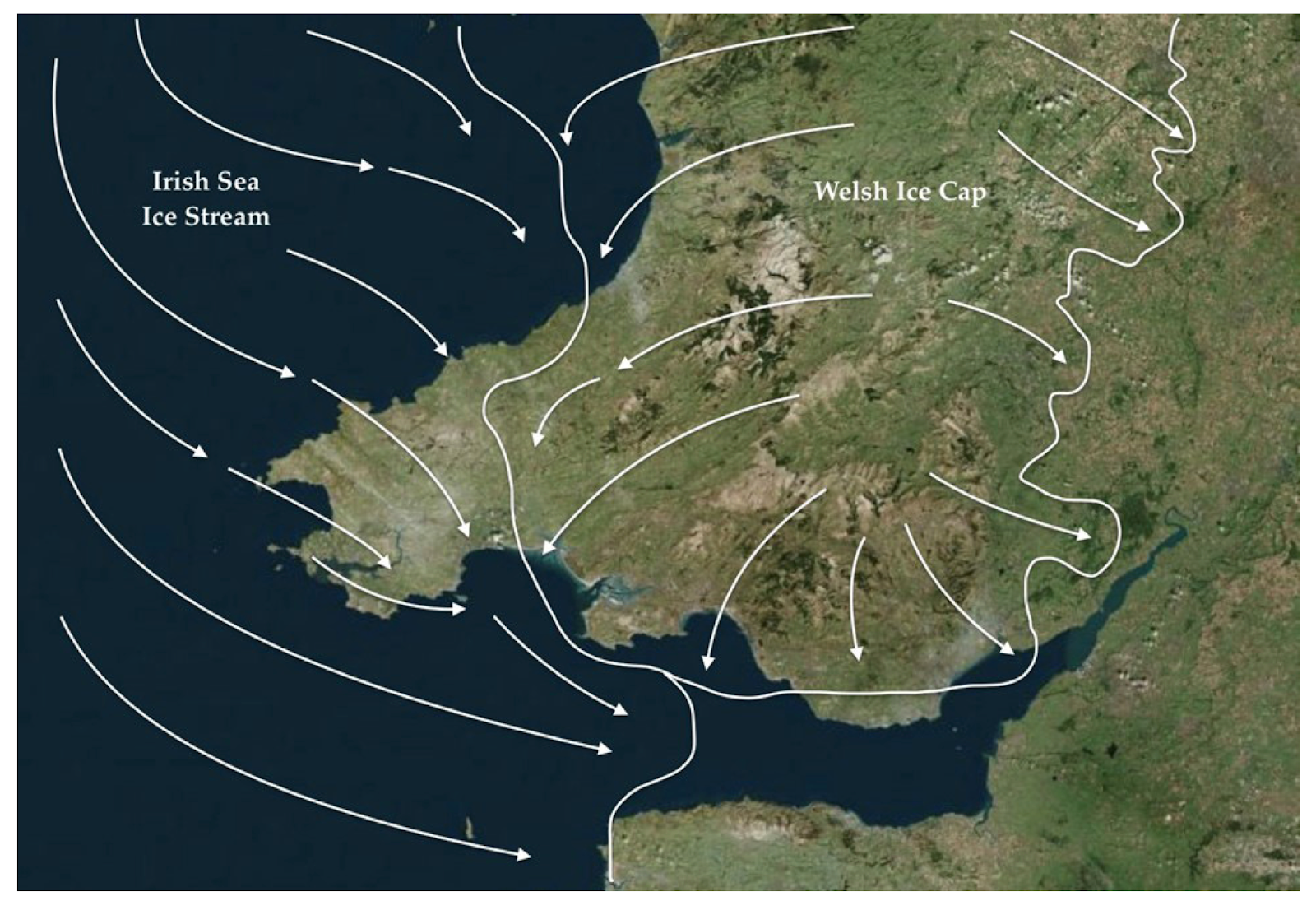Some of the sites cited in the QN paper.
The revised LGM map showing ice streams and directions of flowI have noticed that the link used on my previous post about this article, about a year ago, does not work any longer. That is because the QRA website has been redesigned, and because the archive of past issues of the journal has been made open access. So (I think) the articles from all past issues are now readily available for anybody to view. Here is the correct link to my paper:
https://www.qra.org.uk/mp-files/qn158_1_late-devensian-ice-free-corridor-in-pembrokshire.pdf/
Citation:
John, B.S. 2023. Was there a Late Devensian ice-free corridor in Pembrokeshire? Quaternary Newsletter 158, pp 5-16.
==================
Abstract
An ice-free enclave or corridor covering most of Pembrokeshire has featured in many of the recent reconstructions of glacial activity in western Britain during the LGM. This appears to be a hangover from the days when the terms “Older Drift” and “Newer Drift” were frequently used in the literature. However, the supposed ice- free corridor is not well supported in published studies, and it causes difficulty for those involved in ice-sheet modelling. With the aid of new field observations from scores of sites across West Wales, it is suggested that there is no convincing evidence in support of the ice-free hypothesis. The regional Quaternary stratigraphy in Central and South Pembrokeshire matches that of North Pembrokeshire and the St Brides Bay coast, and it is suggested that the whole of the peninsula was inundated by the ice of the Irish Sea Ice Stream travelling broadly NW to SE at the time of peak glaciation, around 26,000 years ago.
The paper incorporates a pretty radical re-interpretation of the field evidence from West Wales, and I'm pleased to say I have had many kind comments about it. Nobody, thus far, has disagreed with any of it.........



No comments:
Post a Comment